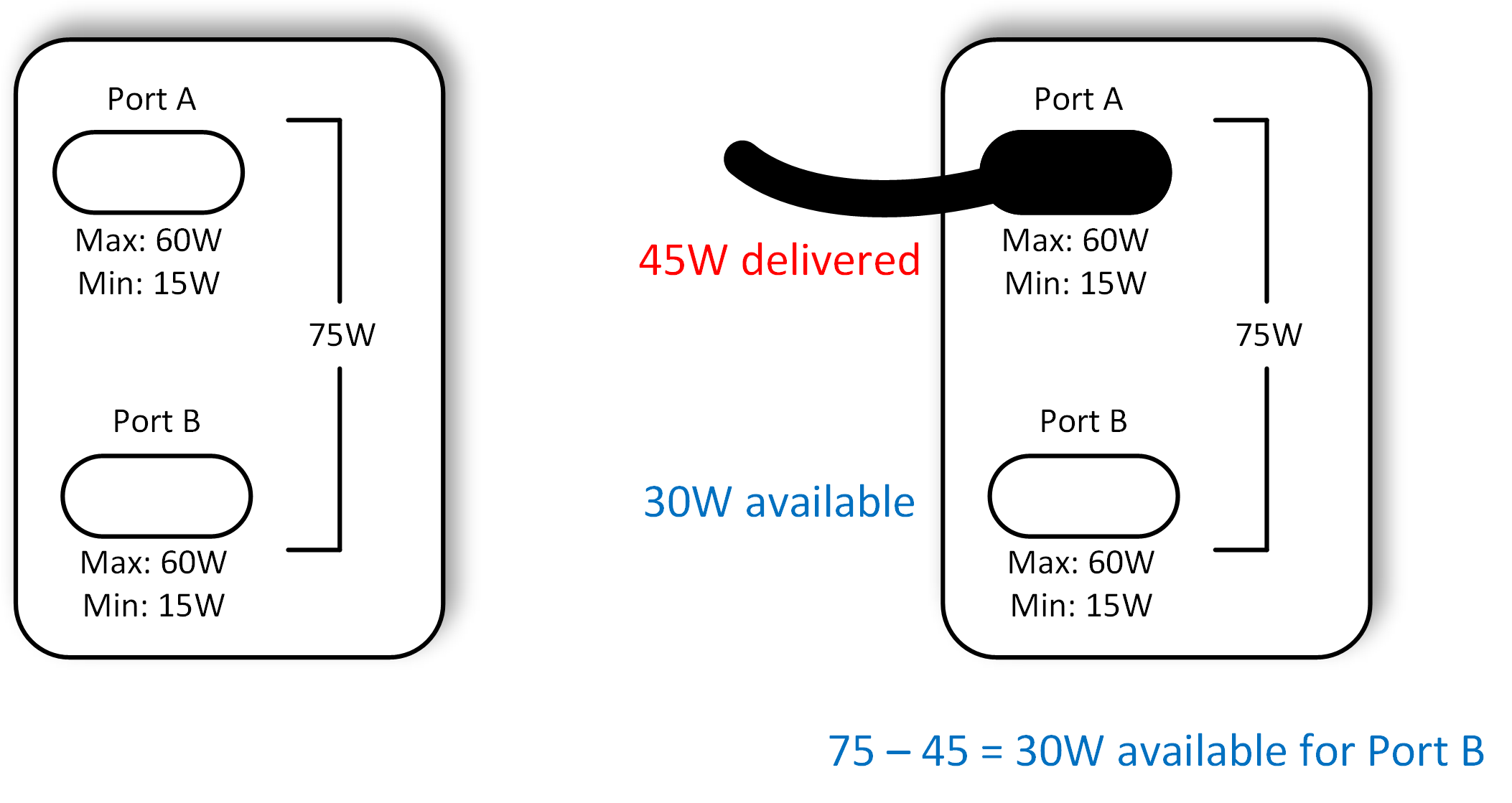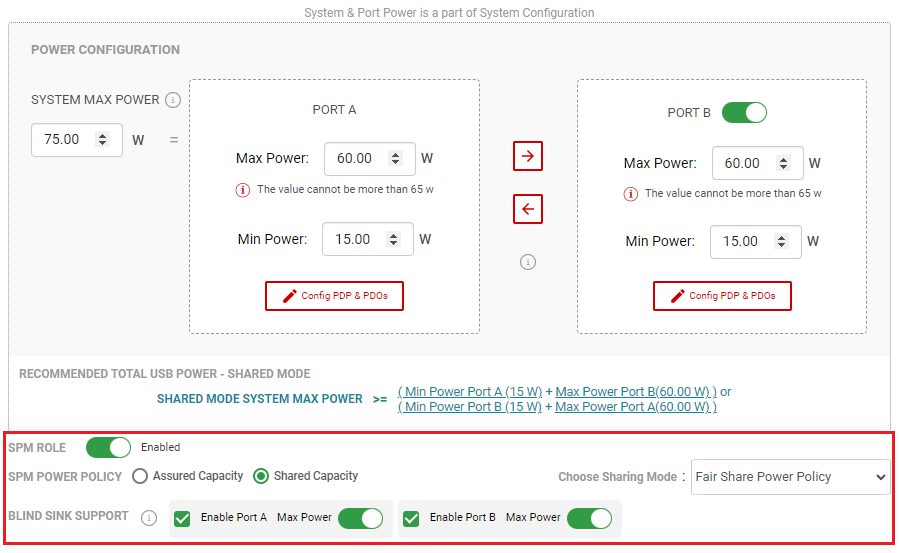SLVAFG6B December 2022 – November 2024 TPS25762-Q1 , TPS25763-Q1 , TPS25772-Q1
3.2 Shared Capacity Policy
The Shared Capacity Policy is where the sum of the Port Max Power, as designed, is less than the System Max Power. When the Source ports are configured in Shared Capacity, Port Min Power is guaranteed for each port while the remaining power stored in Power Reserve is shared between Port A and Port B.
An example of the Shared Capacity Policy is shown in Figure 3-4 where the System Max Power is 75W, Port A and B's Min Power are both 15W, and there is 45W in Power Reserve. Port A connects to a Sink that requests 45W. Port A's Min Power of 15W is guaranteed, so 30W is distributed from Power Reserve to deliver a total of 45W, the Sink's requested power. The remaining power in Power Reserve is now 15W, so with Port B's Min Power of 15W, a total of 30W is available for Port B. From this point, what occurs when a second Sink connects to Port B is dependent on the Port Partner's Sink Capabilities and is discussed in the following subsections.
 Figure 3-4 Shared Capacity Policy
Figure 3-4 Shared Capacity PolicyFigure 3-5 shows the Shared Capacity Policy selection in the GUI's Advanced Configuration view.
 Figure 3-5 Shared Capacity GUI Selection
– Advanced Configuration
Figure 3-5 Shared Capacity GUI Selection
– Advanced ConfigurationNote that although freely configurable in the GUI, according to the USB Type-C Cable and Connector Specification Release 2.2, the following behavioral rules must apply for Source ports configured with Shared Capacity Policy:
- Both Source ports must have the same power capabilities; each port must be capable of the same Port Max Power, Port Min Power, and able to harvest power from Power Reserve equally.
- Port Min Power must be at least 7.5W.
- Ports that initially offer 1.5A must increase to 3A after a connection with a Sink if there is sufficient power remaining in Power Reserve within one second.